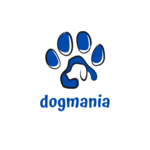The Ultimate Beginner's Guide to Raw Feeding for Dogs in 2024
In recent years, raw feeding for dogs has gained significant attention among pet owners seeking to provide optimal nutrition for their furry companions. This feeding approach involves serving dogs a diet primarily composed of raw meat, bones, organs, and sometimes vegetables and fruits. Advocates of raw feeding believe it closely mimics what dogs ate in the wild, promoting better health and vitality. If you're considering transitioning your dog to a raw diet, this ultimate beginner's guide will provide you with everything you need to know.
Understanding Raw Feeding
Benefits of Raw Feeding
Components of a Raw Diet
1. Raw Meat: This forms the foundation of a raw diet and should include a variety of protein sources such as beef, chicken, turkey, lamb, and fish.
2. Bones: Raw bones, such as chicken wings or turkey necks, provide essential calcium and minerals. They also serve as a natural toothbrush, helping to clean teeth and strengthen jaw muscles.
3. Organs: Liver, kidney, and other organ meats are essential for providing vitamins and minerals, including vitamin A, B vitamins, iron, and zinc.
4. Vegetables and Fruits (optional): While not necessary for all dogs, some owners choose to include small amounts of vegetables and fruits to provide additional vitamins, antioxidants, and fiber.
Transitioning to a Raw Diet
Safety Considerations
1. Handling Practices: Always practice proper food handling and hygiene when preparing raw meals for your dog. Wash your hands, utensils, and surfaces thoroughly after handling raw meat.
2. Quality Ingredients: Source high-quality, human-grade meats from reputable suppliers to reduce the risk of contamination.
Consulting with a Veterinarian
conclusion
Raw feeding for dogs offers a natural and biologically appropriate approach to canine nutrition, potentially providing numerous health benefits. By understanding the principles of raw feeding, gradually transitioning your dog to a raw diet, prioritizing food safety, and consulting with a veterinarian, you can provide your furry companion with a wholesome and nutritious diet that supports their overall well-being. Whether you're a seasoned raw feeder or considering it for the first time, this ultimate beginner's guide serves as a comprehensive resource to help you embark on your raw feeding journey with confidence.



leave me your thoughts here